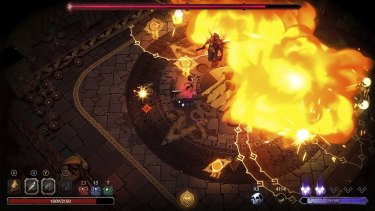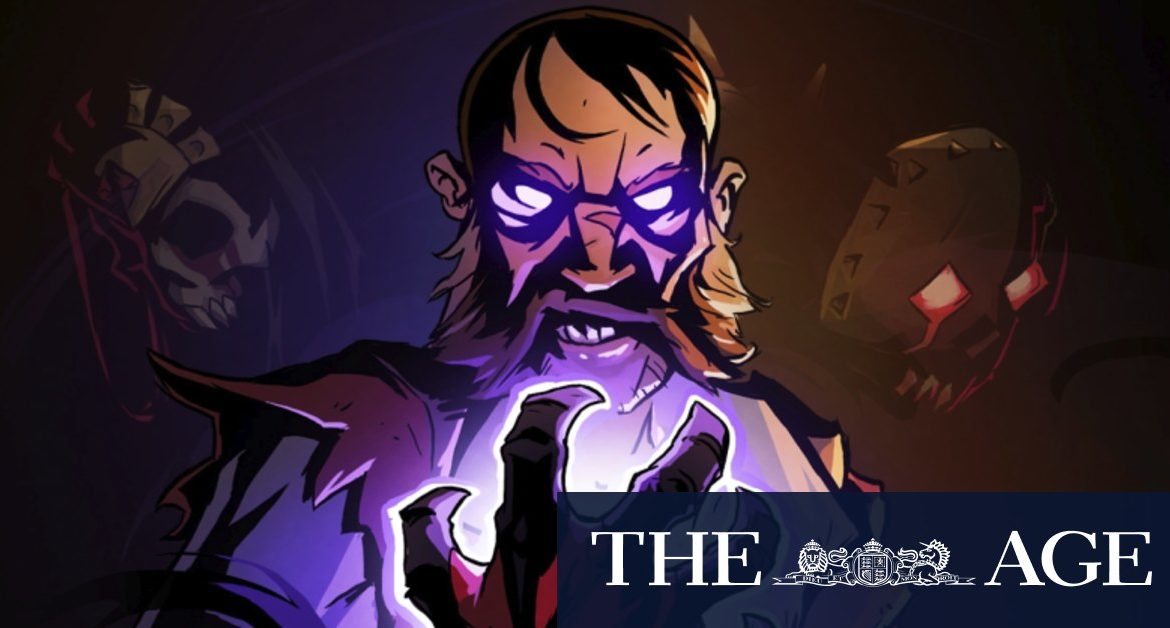With solid core combat, a creepy Mayan aesthetic and endlessly intricate layers of systems, modifiers and augmentations, Curse of the Dead Gods is a game that’s not unlike the doomed temple it contains; seemingly impenetrable at first but with richer and richer rewards the further down you go.
Whether you call them roguelites or procedural death labyrinths, this particular genre of game — where you repeatedly run through the levels and start all over again when you die — shows no sign of losing momentum. From Dead Cells to Spelunky to Hades, there’s something about the challenge of randomly generated levels and the satisfaction of earning your progression through learning over time that’s incredibly appealing.
Shrines offer various benefits and upgrades, if you have the gold or are willing to risk corruption by offering blood.
On a quest for riches and immortality, your rugged 1920s-style explorer has found himself bound to a wicked temple; suffering horrible curses as he delves deeper and faces reanimated magical protectors, and being resurrected at the entrance every time he dies. Each run you’re aiming to get as far into the temple as possible, using scavenged gold or your own blood to earn powerful upgrades, picking up new weapons and relics, creating combinations of advantages to give you an edge and adapting to the various handicaps of the curses.
There’s so much to keep track of that it can be very intimidating at first. Ambient light has an effect on your ability to absorb damage and spot traps, so you need to make creative use of your torch. There’s also a stamina meter to watch, a corruption level you need to keep down to avoid curses, attributes, weapons, relics, money, blessings and so on.
But once you get your head around the nomenclature the true nature of the game becomes clear. In many cases you’re making a series of miniature risk vs reward decisions, balancing your health and your combat abilities against your corruption. The more corruption you receive (from making blood sacrifices, being damaged by enemies or healing at wells) the more curses you’re hit with, and the true randomness of curses can really put a spanner in the works of your finest plans.
One might make it so you lose gold as you get damaged, while another might cause all treasure chests to inflict corruption. One particularly nasty curse made it so all subsequent curses were mysteries; I had no idea what conditions were being placed upon me until they started showing up.

Your ability to make it through a boss encounter will depend a lot on how you’ve built your character on the run so far, and what curses you’re affected by.
Each run you start from scratch with a basic set of gear, but with shrewd management of gold and blood, and some luck, you can end up with awesome combinations of weapons and ability-enhancing relics. You might wield a flaming bow and a heavy hammer that does extra damage to on-fire enemies, or you might exploit an enhancement to your gold collection to buy stat upgrades and become unstoppable. And although that all goes away when you die, certain currencies do stay with you so you can unlock new weapons, new paths and permanent blessings over time.
Outside of the main temple paths there are special events and daily challenges that offer specific circumstances and can only be attempted once. I played one that made the explorer vulnerable to light, so rather than protecting torches and sconces I was snuffing them out before engaging any enemies. The sheer variability between runs is what’s most impressive here, even if the comparatively shallow difficulty curve and lack of narrative means it doesn’t have the long legs of a Dead Cells or Hades.







